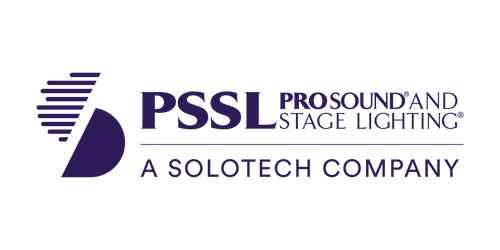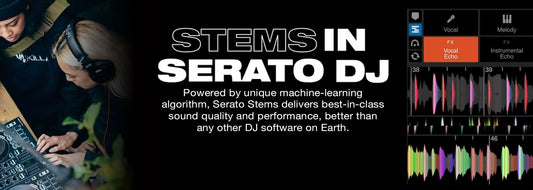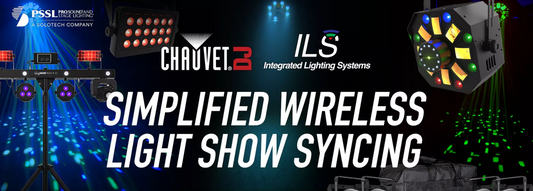Cable Guide
Cables can be confusing! We've created this glossary of commonly used cable terms to help you tell the difference between different types of cables, identify what cables you need and make it easier to find the cable that's right for you.

1/8" (Mini)
1/8" diameter connectors are generally used in smaller audio visual interconnects. This is usually the size of the headphone jack on most portable media players and may either be TRS or TS.

Adapter
In the world of cables, an adapter is any connector for joining two or more connections or devices having different jacks, inputs, etc., enabling them to be fitted or to work together. In many cases, an adapter can be a quick fix, or an inexpensive solution to a large problem. For instance, an ipod can be hooked up to a mixer by simply using an 1/8" to an RCA adapter cable.

AES (AES/EBU)
The digital audio standard frequently called "AES" or "AES/EBU" (officially known as AES3), is used for transmitting digital audio signals between various audio and video devices. Developed by the Audio Engineering Society (AES) and the European Broadcasting Union (EBU), both AES and EBU versions of the standard exist. The most common AES/EBU physical interconnect in the pro audio world is the AES Type I Balanced - 3 conductor, 110 ohm twisted pair cabling with an XLR connector. The more known "S/PDIF" was developed as a consumer version of AES using connectors more commonly found in the general market.

Banana (or MDP)
A banana connector (usually referred to as a banana plug for the male and a banana jack for the female) is a single-wire (one conductor) electrical connector used for joining wires to equipment. Banana plugs are also sometimes called "MDP" plugs and they inserted into the open end of "binding posts". In the world of pro audio and live sound they are sometimes used as connectors on cables that connect the power amplifier to the loudspeakers.

BNC
The "BNC" connector is named after its bayonet mount locking mechanism and its two inventors, Paul Neill of Bell Labs (inventor of the N connector) and Amphenol engineer Carl Concelman (inventor of the C connector). Being much smaller than both the N and the C connectors, a BNC connector is used for RF signal connections and is often found on video and digital audio equipment. Sometimes used as an alternative to an RCA connecter for a composite video connection, the BNC connectors are more commonly used in the audio world to carry synchronizing clock signals between devices.

DB25
The DB25 connector is a type of D-sub connector that contains two parallel rows of pins or sockets(13 on the top, 12 on the bottom) surrounded by a D-shaped metal shield which some screening against electromagnetic interference. The unique D shape guarantees correct orientation and is commonly used to connect peripherals similar to parallel ports on PC computers. DB25's are used numerous ways in the audio world, especially when connecting analog and/or digital I/O inputs and outputs.

Elco
Elco multi-pin connectors are used for connecting multi pair cable with one connector. Elco is the U.S. name for the brand while "Edac" is the Canadian branch of Elco. Both Elco and Edac come in male and female connectors with 20, 38, 56, 90, and 120 pin configurations.

Optical
Optical cables contain optical fiber which carries much more information than the conventional copper wire and is usually not subject to electromagnetic interference. These high end cables are for compatible 2-channel S/PDIF and ADAT lightpipe connections and are available in a variety of products from many manufacturers.

RCA
These phono connectors are named after the RCA Corporation which developed many stereo systems and turntables that used these connectors. Usually there is one white (or grey) connector for the left and one red connector for the right. Sometimes there is a composite video RCA connector as well - these are usually yellow . RCA connectors are popular with mixers, CD Players, and even televisions and DVD players.

SPDIF
SPDIF (Sony/Philips Digital Interconnect Format) is a digital audio format, and is sometimes referred to as S/PDIF, S/P-DIF, and IEC 958 type II. SPDIF connectors are used for interfacing stereo digital audio signals on PC audio cards, CD players, DVD players, car audio systems, and other systems which transmit or receive stereo digital audio. It is essentially a minor modification of the original AES/EBU standard for consumer use, providing small differences in the protocol and requiring less expensive hardware. Though there are differences between the two formats, S/PDIF typically uses either unbalanced, high impedance coaxial cables or fiber optic cables for transmission.

Speakon
Speakon is one of the more recently developed audio connectors and includes a locking system that may be designed for a soldered or screw-type connection. "Female" line connectors interlock with "male" panel connectors and Speakon cables usually have identical connectors at both ends. Speakon connections are widely used in higher end PA systems and clubs for connecting speakers to power amplifiers.

TDIF
Developed by Tascam, this 25-pin, D-Sub cable can transmit and/or receive up to eight channels of digital audio between compatible devices and is widely used today by many professionals and semi-pro MDM related products. The term "TDIF" stands for Tascam Digital InterFace and is pronounced "Tee-dif".

TRS (1/4")
TRS stands for "Tip Ring Sleeve." TRS is the more accurate term when people are referring to a 1/4" balanced connector. They look like a 1/4" TS plug with an extra "ring" along the column of the connector. These two rings form three sections on the connector which are referred to as the Tip, Ring, and Sleeve. TRS connectors are used for connecting balanced equipment such as microphones or line level signals or wherever you may need to have two conductors plus a ground in one plug.

TS
A TS cable is a 1/4" cable similar to the TRS connector but without the bottom "ring". With only one divider, there are only two sections - the "Tip" and the "Sleeve". The "Tip" is the carrier of the signal while the "Sleeve" is where the ground is connected. Some common examples of cables with TS connectors are guitar cables or cables for line-level instruments.

TT (Tiny Telephone)
Although relatively unknown by the vast majority, the pro audio world and the telecommunication industry rely heavily on "TT" (Tiny Telephone) connectors which use mid-size phone plugs with a 4.4 mm (0.173-inch) diameter shaft. Sometimes known as a "bantam" plug, TTs are often used for professional console and outboard patch bays in studios and live sound applications because of their compactness and reliability. TT connectors also come in a TRS (Tip Ring Sleeve) version which can handle balanced line signals. These TRS versions are preferred in pro audio installations.

XLR
XLR connectors are commonly used for transmitting balanced mic and line level signals to speakers and mixers. They were originally developed by Cannon for the "Cannon XL" series which later added a Rubber compound surrounding the contacts - eventually leading to the abbreviation "XLR". Many manufacturers now produce XLR cables and connectors, the industry standard having three pins - one for a positive, one for a negative, and one for a ground connection. The XLR connector is designed so that the pin for the ground connection is made first, which aids in preventing unwanted sounds and pops in the audio chain.

Y Cable (Insert Cable)
Y Cables are used to either divide a single signal into two parts or take two signals and combine them into one. They are commonly called "Y" Cables because most of them resemble the letter "Y". Y (or Insert) cables come with a variety of connectors and can be used to do many things in the pro audio and live sound arena depending on the equipment being connected. It is advised to be careful when using a Y cable or adapter because serious damage could result (for instance, when combining to power amplifier signals into one).
Please give us a call if you need more info about picking the right cable for your next gig at 800-268-5520.




